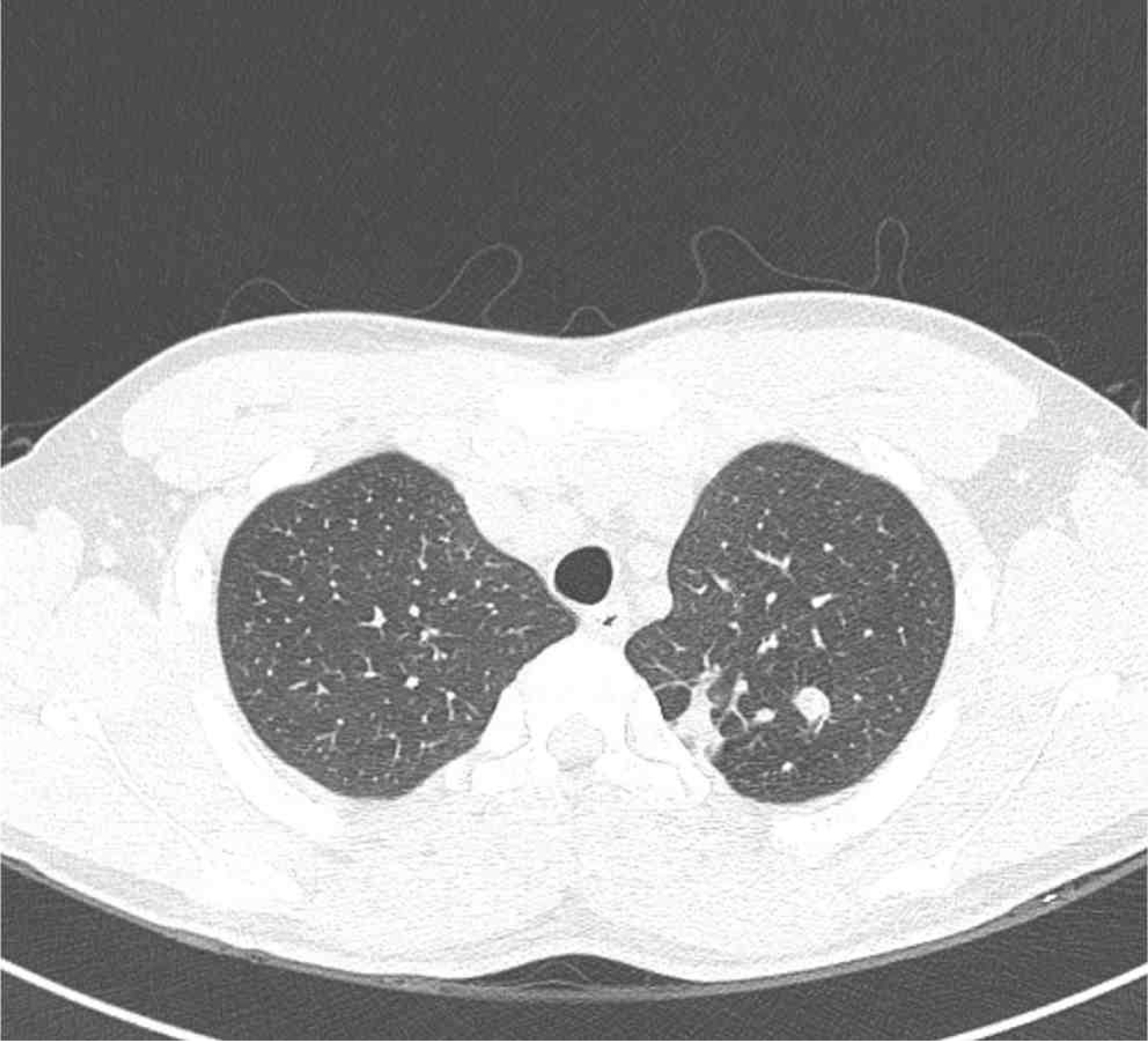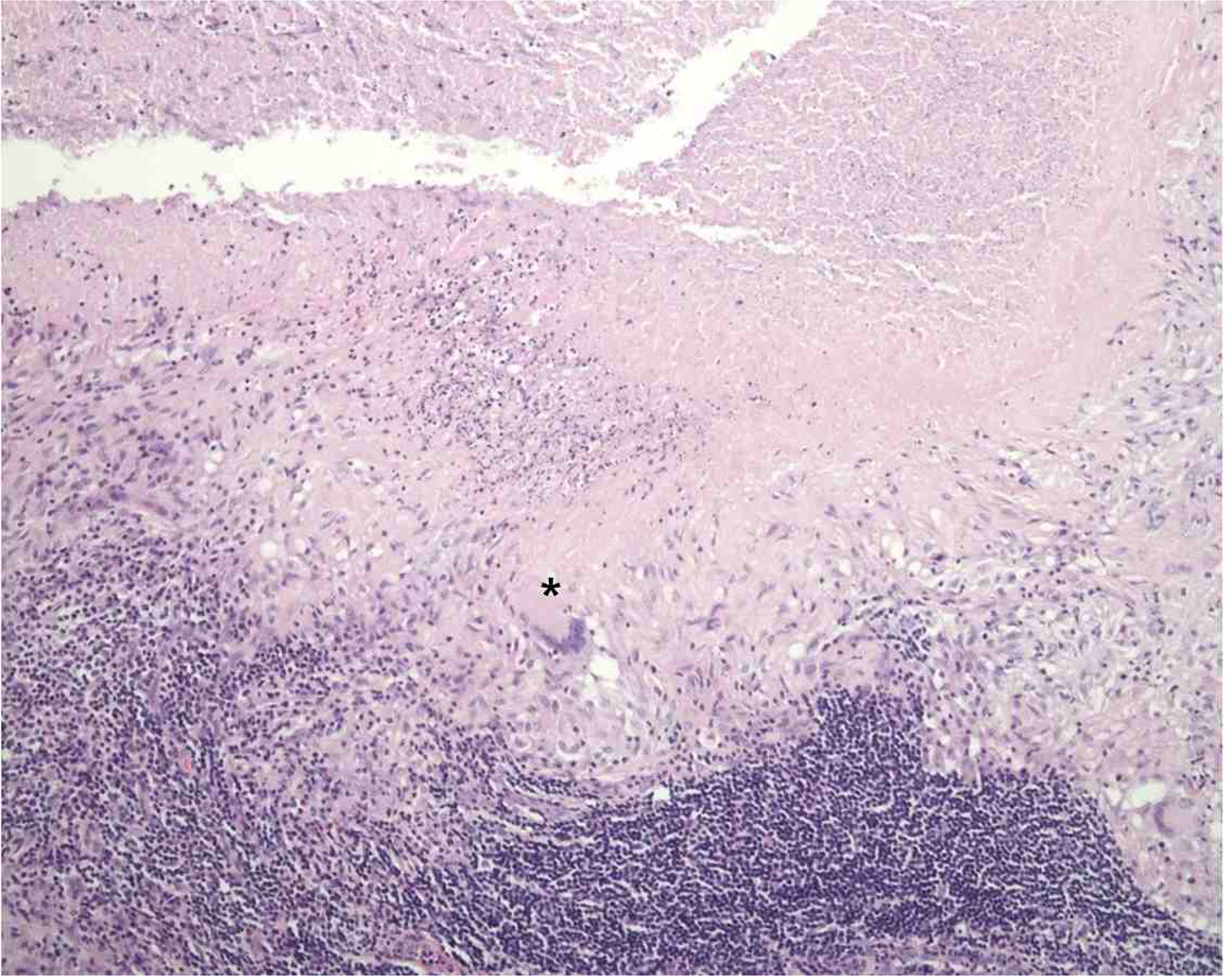Kosin Med J.
2016 Jun;31(1):71-78. 10.7180/kmj.2016.31.1.71.
Paradoxical response as a cervical lymph node enlargement after termination of anti-tuberculosis treatment in a patient with pulmonary tuberculosis
- Affiliations
-
- 1Department of Internal Medicine, Busan Paik Hospital, College of Medicine, Inje University, Busan, Korea. goodoc@gmail.com
- 2Department of Pathology, Busan Paik Hospital, College of Medicine, Inje University, Busan, Korea.
- KMID: 2328720
- DOI: http://doi.org/10.7180/kmj.2016.31.1.71
Abstract
- A paradoxical response is not uncommon in non-HIV-infected patients, particularly those with extra-pulmonary tuberculosis. It is defined as the radiological and clinical worsening of a previous lesion or the development of new lesion during anti-tuberculosis therapy. The paradoxical response has been attributed to host immunologic reactions, such as a delayed hypersensitivity or a response to mycobacterial antigens. In most reports of paradoxical response, these responses occurred in the same location as a previous lesion. In this patient with pulmonary tuberculosis, cervical lymph node enlargement occurred as a paradoxical response after the completion of anti-tuberculosis treatment. Although the new lesion developed in another location, it could be considered as a paradoxical response based on the negative culture result of acid fast bacilli from the new lesion and drug sensitivity result from initial bronchoalveolar lavage specimen. Therefore we were able to decide on the termination of unnecessary anti-tuberculous treatment. Based on our case, we can conclude that paradoxical response can occur after the termination of anti-tuberculosis therapy even in new site.
MeSH Terms
Figure
Reference
-
References
1. Cheng SL, Wang HC, Yang PC. Paradoxical response during antituberculosis treatment in HIV-neg-ative patients with pulmonary tuberculosis. Int J Tuberc Lung Dis. 2007; 11:1290–5.2. Cho OH, Park KH, Kim T, Song EH, Jang EY, Lee EJ, et al. Paradoxical responses in non-HIV-in-fected patients with peripheral lymph node tuberculosis. J Infect. 2009; 59:56–61.
Article3. Jeon K, Choi WI, An JS, Lim SY, Kim WJ, Park GM, et al. Paradoxical response in HIV-negative patients with pleural tuberculosis: a retrospective multicentre study. Int J Tuberc Lung Dis. 2012; 16:846–51.
Article4. Park KH, Lee MS, Lee SO, Choi SH, Kim YS, Woo JH, et al. Incidence and outcomes of paradoxical lymph node enlargement after antituberculosis therapy in non-HIV patients. J Infect. 2013; 67:408–15.
Article5. Marshall BG, Chambers MA. Central nervous system tuberculosis–the paradox of the host immune response. J Infect. 1998; 36:3–4.6. Hawkey CR, Yap T, Pereira J, Moore DA, Davidson RN, Pasvol G, et al. Characterization and management of paradoxical upgrading reactions in HIV-uninfected patients with lymph node tuberculosis. Clin Infect Dis. 2005; 40:1368–71.
Article7. Polesky A, Grove W, Bhatia G. Peripheral tuberculous lymphadenitis: epidermiology, diagnosis, treatment, and outcome. Medicine. 2005; 84:350–62.
- Full Text Links
- Actions
-
Cited
- CITED
-
- Close
- Share
- Similar articles
-
- Severe Paradoxical Reaction Requiring Tracheostomy in a Human Immunodeficiency Virus (HIV)-negative Patient with Cervical Lymph Node Tuberculosis
- Thyroid Tuberculosis Diagnosis by Core Needle Biopsy Associated with Lymph Node Enlargement
- A Case of Tuberculous Peritonitis Developed during Chemotherapy for Tuberculous Pleurisy as Paradoxical Response
- A Case Report of Tuberculous Brain Abscess and Tuberculous Peritonitis Developing Due to Paradoxical Reactions
- Radiological evaluation of primary pulmonary tuberculosis




